|
1998 IMF Survey Supplement
on the Fund / September 1998
IMF Chronology
IMF Evolves in Response to Over Half a Century Of Challenge and Change
- 1944
- July 1–22
- IMF and World Bank Articles of Agreement formulated at the International Monetary and Financial Conference, Bretton Woods, New Hampshire.
- 1945
- December 27
- Articles of Agreement enter into force upon signature by 29 governments, representing 80 percent of original quotas.
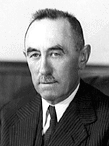
Camille Gutt, from Belgium, served as the IMF's first Managing Director from 1946 to 1951.
|
- 1946
- March 8–18
- Inaugural meeting of Board of Governors in Savannah, Georgia: by-laws adopted, agreement to locate IMF headquarters in Washington, first Executive Directors elected.
- May 6
- Twelve Executive Directors five appointed and seven elected hold inaugural meeting in Washington.
- September 27–October 5
- First Annual Meetings of Boards of Governors of IMF and World Bank in Washington.
- 1947
- March 1
- IMF begins operations.
- May 8
- First drawing from IMF (by France).

Ivar Rooth, from Sweden, was Managing Director from 1951 to 1956.
|
- 1952
- August 13–14
- Germany and Japan become members.
- October 1
- Executive Board approves proposals for standardized Stand-By Arrangements.
- 1962
- January 5
- Executive Board adopts terms and conditions of General Arrangements to Borrow (GAB).
- 1963
- February 27
- Compensatory Financing Facility created.
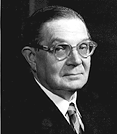
Per Jacobsson, from Sweden, was Managing Director from 1956 to 1963.
|
- 1967
- September 29
- Board of Governors approves plan to establish special drawing rights (SDRs).
- 1969
- June 25
- Buffer Stock Financing Facility established.
- July 28
- First Amendment to Articles of Agreement, establishing a facility based on the SDR, takes effect after acceptance by three-fifths of membership representing four-fifths of voting power.
- 1970
- January 1
- First allocation of SDRs.
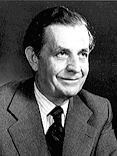
Pierre-Paul Schweitzer, from France, was Managing Director from 1963 to 1973.
|
- 1971
- August 15
- United States informs IMF it will no longer freely buy and sell gold to settle international transactions. Par values and convertibility of the dollar—two main features of Bretton Woods system—cease to exist.
- December 18
- After four months of negotiating, Smithsonian Agreement provides for realignment of industrial country currencies and increase in price of gold. IMF establishes temporary regime of central rates and wider margins.
- 1972
- July 26
- Board of Governors adopts resolution establishing a Committee on Reform of the International Monetary System, known as the Committee of 20.
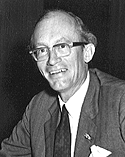
H. Johannes Witteveen, from the Netherlands, was Managing Director from 1973 to 1978.
|
- 1973
- March 19
- “Generalized floating” begins as European Community countries introduce joint float for their currencies against U.S. dollar.
- 1974
- June 12–13
- Committee of 20 concludes work, agreeing on immediate program to help monetary system evolve. Executive Board establishes oil facility; adopts “Guidelines for the Management of Floating Exchange Rates” and new method of SDR valuation based on basket of 16 currencies.
- September 13
- IMF sets up Extended Fund Facility to give medium-term assistance to members with balance of payments problems owing to structural economic changes.
- October 3
- Interim Committee holds inaugural meeting, following its establishment on October 2.
- 1975
- August 1
- Executive Board establishes a Subsidy Account, funded by contributions, to assist the most seriously affected members using the oil facility.
- 1976
- January 7–8
- Interim Committee agrees on “interim reform” of monetary system, including amendment of Article IV and other issues.
- May 5
- Executive Board establishes a Trust Fund to provide balance of payments assistance to developing country members with profits from sale of gold. The Board decides on policies and procedures for selling gold.
- June 2
- IMF holds first gold auction under Interim Committee understandings on disposition of one-third of IMF gold holdings. Proceeds of sales to go to Trust Fund to benefit developing countries.
- 1977
- February 4
- IMF makes first loan disbursements under Trust Fund.
- August 29
- Executive Board establishes Supplementary Financing Facility.
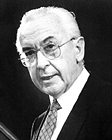
Jacques de Larosière, from France, was Managing Director from 1978 to 1987.
|
- 1978
- April 1
- Second Amendment of Articles of Agreement enters into force, establishing right of members to adopt exchange rate arrangements of their choice.
- September 24
- Interim Committee approves 50 percent quota increase under Seventh Review, which, when accepted by all members, raises IMF general resources to SDR 58.6 billion; it also agrees on new allocations of SDR 4 billion each year for three years beginning January 1979.
- 1979
- February 23
- Supplementary Financing Facility enters into force.
- 1980
- April 25
- Interim Committee agrees IMF should be ready to play growing role in adjustment and financing of payments imbalances by providing assistance over longer periods and in larger amounts.
- September 17
- IMF decides to unify and simplify, as of January 1, 1981, currency baskets determining value and interest rate on SDR. Unified basket to be composed of currencies of five members with largest exports of goods and services during 1975–79—U.S. dollar, Deutsche mark, French franc, Japanese yen, and pound sterling.
- December 1
- IMF announces that 128 members have consented to quota increases under Seventh General Review, meeting the minimum participation requirement for quota increase, under which aggregate quotas would be raised to SDR 60 billion.
- 1981
- January 1
- IMF begins to use simplified basket of five currencies to determine daily valuation of SDR.
- March 13
- IMF decides to institute policy of enlarged access to its resources following full commitment of resources from Supplementary Financing Facility and until Eighth General Review of Quotas takes effect.
- April 23
- IMF announces decisions to enhance SDR’s attractiveness as reserve asset. Measures include making interest rate more competitive and eliminating reconstitution requirement (allowing members to use SDRs permanently).
- May 7
- IMF Managing Director and Governor of Saudi Arabian Monetary Agency sign loan agreement allowing IMF to borrow up to SDR 8 billion to finance IMF’s policy of enlarged access, which thus becomes operative.
- May 13
- IMF reaches agreement in principle with central banks or official agencies of 13 industrial countries, under which they will make available SDR 1.1 billion over two years to help finance the IMF’s policy on enlarged access.
- May 21
- IMF extends financing to members encountering balance of payments difficulties produced by excesses in cost of cereal imports. Assistance integrated into IMF’s Compensatory Financing Facility.
- 1982
- January 13
- Executive Board adopts guidelines for borrowing by IMF as important temporary measure, but member country quotas remain main source of IMF financing.
- August 13
- Mexico encounters serious problems servicing its foreign debt, marking onset of debt crisis. In following months, IMF supports major adjustment programs in Mexico and several other countries facing severe debt-servicing difficulties.
- 1983
- February–March
- Interim Committee agrees to increase IMF quotas under Eighth General Review. IMF Board of Governors adopts resolution on quota increase.
- November 30
- Increases in quotas under Eighth General Review take effect.
- December 30
- Ten participants in General Arrangements to Borrow (GAB) concur on plans to revise and enlarge the GAB.
- 1985
- October 6–7
- Interim Committee agrees that approximately SDR 2.7 billion in Trust Fund reflows to become available during 1985–91 be used to provide concessional lending to low-income members.
- December 2
- IMF Managing Director and World Bank President express broad support for the debt initiative proposed by U.S. Treasury Secretary James A. Baker. It calls for comprehensive adjustment measures by debtors, increased and more effective structural lending by multilateral development banks, and expanded lending by commercial banks.
- 1986
- March 27
- IMF establishes Structural Adjustment Facility (SAF) to provide balance of payments assistance on concessional terms to low-income developing countries.
- April 9–10
- Interim Committee calls for enhanced policy coordination to improve functioning of floating exchange rate system.

Michel Camdessus, from France, has been Managing Director since 1987.
|
- 1987
- February 22
- Finance ministers of six major nations meet; IMF Managing Director participates. Ministers agree, in Louvre Accord, to intensify policy coordination and to cooperate closely to foster stability of exchange rates “around current levels.”
- December 29
- IMF establishes Enhanced Structural Adjustment Facility (ESAF) to provide resources to low-income members undertaking strong three-year macroeconomic and structural programs to improve their balance of payments and foster growth.
- 1988
- August 23
- IMF Executive Board establishes Compensatory and Contingency Financing Facility to compensate members with shortfalls in export earnings because of circumstances beyond their control and to help maintain adjustment programs in the face of external shocks.
- September 25–26
- Interim Committee endorses intensified collaborative approach to arrears problem.
- 1989
- April 3–4
- Interim Committee asks Executive Board to consider proposals for developing country debt relief, based in part on proposals by U.S. Treasury Secretary Nicholas F. Brady.
- May 23
- Executive Board adopts guidelines to deal with developing country debt problem. These include linking support for debt-reduction strategies to sustained medium-term adjustment programs with strong element of structural reform and access to IMF resources for debt or debt-service reduction.
- 1990
- May 7–8
- Interim Committee agrees to 50 percent quota increase. Committee suggests Executive Board propose Third Amendment to Articles of Agreement, providing for suspension of voting and other membership rights for members that do not fulfill financial obligations to IMF. Committee also approves rights accumulation program, which permits members with protracted arrears to establish a track record on policies and payments performance and accumulate rights for future drawings.
- June 28
- Executive Board proposes increasing total IMF quotas from SDR 90.1 billion to SDR 135.2 billion under the Ninth General Review of Quotas.
- November
- Executive Board approves temporary expansion of IMF facilities to support countries affected by Middle East crisis.
- 1991
- October 5
- U.S.S.R. signs agreement with IMF providing for technical assistance, pending its application for full membership.
- 1992
- April–May
- Executive Board approves membership of many states of the former Soviet Union.
- August 5
- IMF approves SDR 719 million Stand-By Arrangement for Russia.
- November
- Executive Board adopts Third Amendment of Articles of Agreement. Executive Board also determines that requirements for quota increases under Ninth General Review of Quotas have been met.
- 1993
- April 16
- Executive Board approves creation of Systemic Transformation Facility (STF) to assist countries facing balance of payments difficulties arising from transformation from a planned to a market economy to be in place through 1994.
- May 13
- Kyrgyz Republic is first member to use STF.
- 1994
- February 23
- Executive Board initiates operations under renewed and enlarged ESAF.
- March–May
- IMF approves arrangements for 13 countries of the CFA franc zone, following January realignment of CFA franc.
- June 6
- IMF announces creation of three Deputy Managing Director posts.
- October 2
- Interim Committee adopts the Madrid Declaration, calling on industrial countries to sustain growth, reduce unemployment, and prevent a resurgence of inflation; developing countries to extend growth; and transition economies to pursue bold stabilization and reform efforts.
- 1995
- February 1
- Executive Board approves a Stand-By Arrangement of SDR 12.1 billion for Mexico, the largest financial commitment by the IMF up to this time.
- 1996
- March 26
- Executive Board approves an SDR 6.9 billion Extended Fund Facility for Russia, the largest EFF in IMF history.
- April 16
- IMF establishes voluntary Special Data Dissemination Standard for member countries having, or seeking, access to international capital markets. A General Data Dissemination System will be implemented later.
- September
- Interim and Development Committees endorse joint initiative for heavily indebted poor countries (HIPCs).
- 1997
- January 27
- Executive Board approves New Arrangements to Borrow (NAB) as the first and principal recourse in the event of a need to provide supplementary resources to the IMF.
- April 25
- Executive Board approves issuance of Public Information Notices following conclusion of members’ Article IV consultations with the IMF at the request of the member to make the IMF’s views known to the public.
- September 20
- Executive Board reaches agreement on proposal to amend Articles of Agreement that will allow all members to receive an equitable share of cumulative SDR allocations.
- December 4
- Executive Board approves a Stand-By Arrangement of SDR 15.5 billion for Korea, the largest financial commitment in IMF history.
- December 17
- In the wake of the financial crisis in Asia, the IMF establishes the Supplemental Reserve Facility (SRF) to help members cope with sudden and disruptive loss of market confidence. The SRF is activated the next day to support the Stand-By Arrangement for Korea.
- 1998
- April 8
- Uganda becomes first country to receive debt relief (approximately $350 million in net-present-value terms) under HIPC, to which IMF will contribute about $160 million.
- July 20
- IMF activates GAB for first time for a nonparticipant and for the first time in 20 years to finance SDR 6.3 billion augmentation of Extended Arrangement for Russia.
|